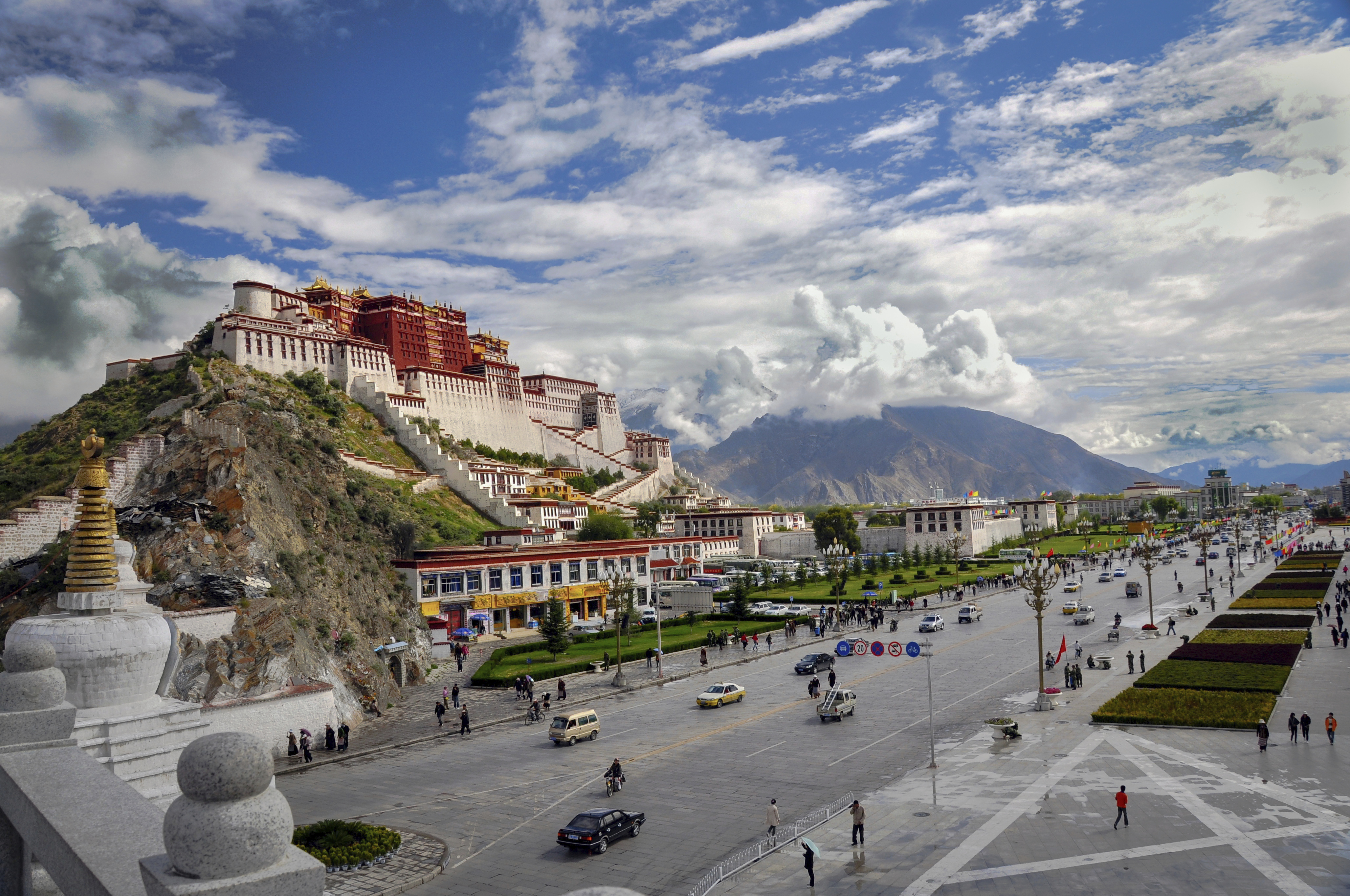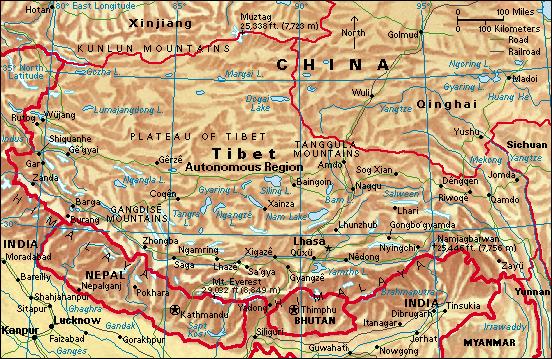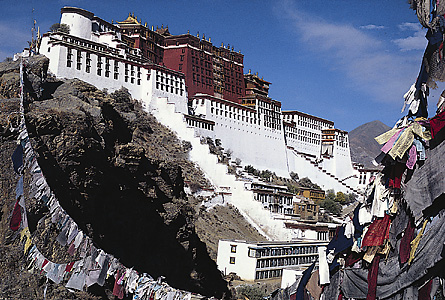Lhasa, << LAH suh >> (pop. 240,000), is the capital and holy city of Tibet. Tibetans consider the city’s temples sacred. The Dalai Lama, a spiritual leader and exiled ruler of Tibet, lived in Lhasa until 1959. In that year, he went into exile in India with many of his followers after a failed revolt in Tibet against the Chinese Communists. Until 1904, Europeans were banned from Lhasa, and it is sometimes called The Forbidden City.

Lhasa lies about 12,000 feet (3,660 meters) above sea level in the Himalaya of southeastern Tibet. It is one of the highest cities in the world. In 2006, a 710-mile (1,140-kilometer) railroad line opened, connecting Lhasa with the Qinghai province city of Golmud.

Lhasa is a closely packed city of stone and brick houses and shops. The city also has many monasteries and temples. Most of the houses have low, flat roofs and no chimneys. Oiled paper, instead of glass, is used in the windows. The 13-floor Potala Palace stands out above the city. Now a museum, the palace once served as a temple, the center of Tibet’s government, and the home of the Dalai Lama.

